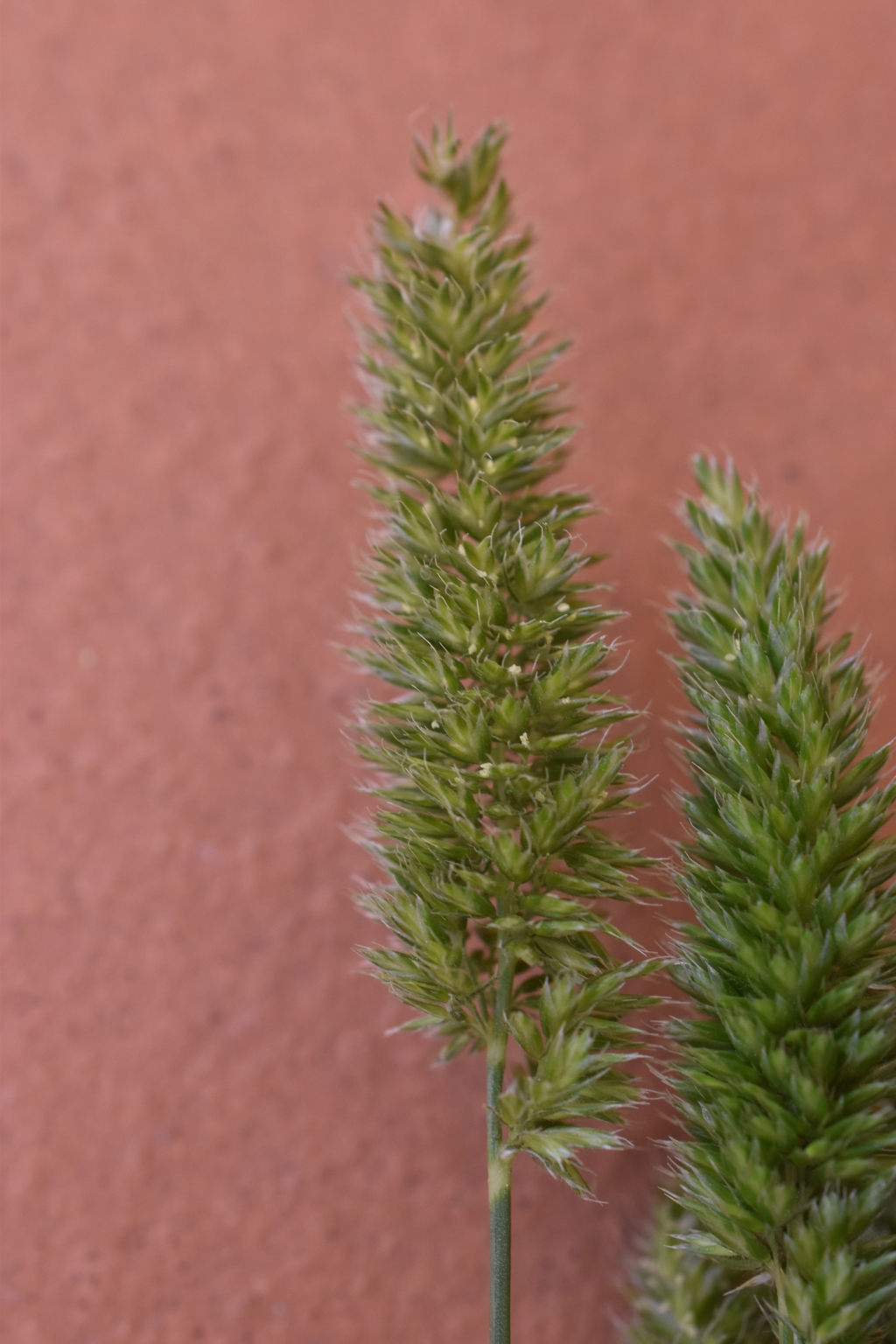Rostraria cristata
(L.) Tzvelev Annual Cat's-tailSlender tufted annual, culms geniculate, to 60 cm high but often less than 15 cm. Leaves softly hairy; blade flat, to 20 cm long and 8 mm wide (often much less); ligule 0.5–1.5 mm long, toothed. Inflorescence oblong to ovate, 1–8 cm long, mostly dense, sometimes lobed near base. Spikelets 3–5 mm long; lower glume 1-nerved, linear to narrow-lanceolate, 1–2.5 mm long, upper glume 3-nerved, ovate to lanceolate, 2–3 mm long; lemmas 5-nerved, 2–3 mm long (excluding awn), glabrous to pubescent, awn virtually straight, 1–3 mm long, inserted at the base of a shallow apical notch. Hairs at apex of rachilla segments to 0.5 mm long. Flowers Sep.–Jan.
LoM, MuM, Wim, GleP, Brid, VVP, VRiv, MSB, RobP, MuF, GipP, OtP, WaP, Gold, CVU, GGr, DunT, NIS, EGU, HSF, HNF, OtR. Naturalized in all States. Indigenous to the Mediterranean region but widely naturalised throughout warmer temperate countries. Widespread in western Victoria where commonest in the drier regions, largely confined to rain-shadow areas in the east (e.g. upper Tambo, Mitchell and Snowy River catchments), with isolated occurrences on near-coastal sands at Point Nepean, Wilsons Promontory and the Ninety Mile Beach.
Typical specimens have the almost glabrous spikelets crowded in a dense panicle resembling that of e.g. Phalaris or Phleum (hence the specific epithet), but a diminutive variant with often looser panicles and distinctly pubescent lemmas is frequently coextensive. Willis (1970) referred the latter form to Koeleria phleoides var. azorensis Domin, but the appropriate combination under Rostraria for this variety does not appear to be available.
Walsh, N.G. (1994). Poaceae. In: Walsh, N.G.; Entwisle, T.J., Flora of Victoria Vol. 2, Ferns and Allied Plants, Conifers and Monocotyledons, pp. 356–627. Inkata Press, Melbourne.
 Spinning
Spinning




